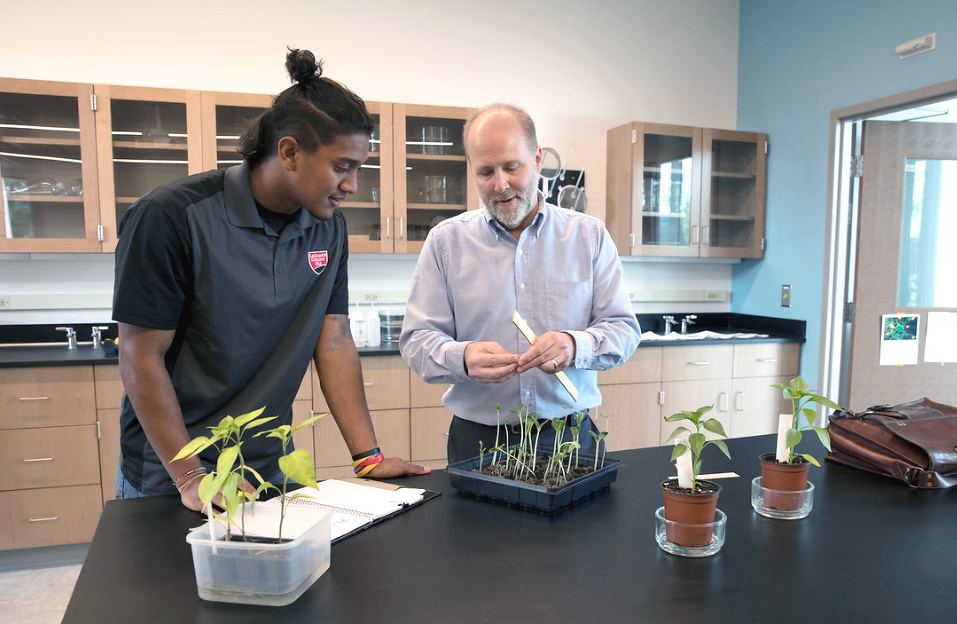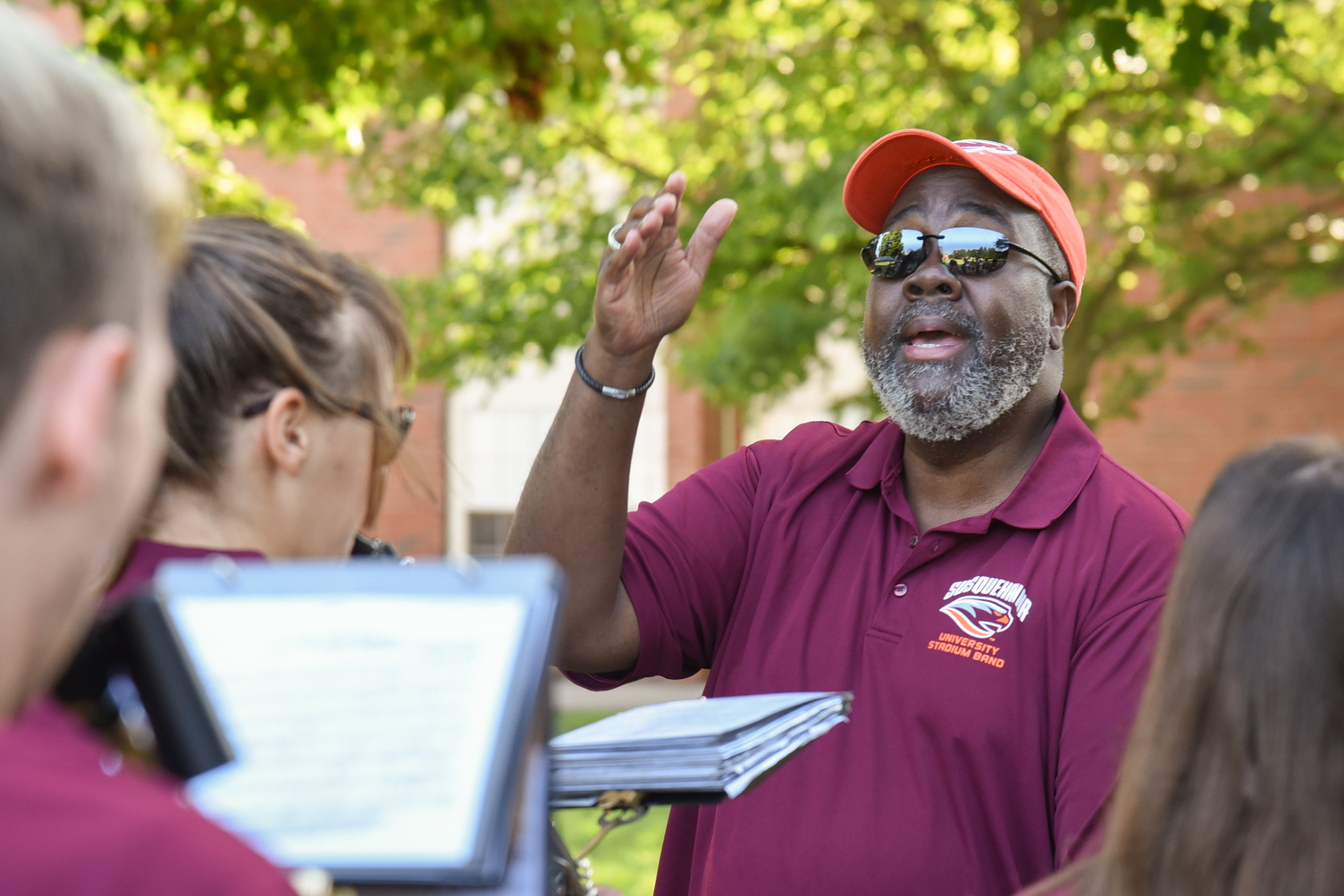See current and past FSSE Overview PDFs.
FSSE Overview
FSSE 2024 Overview
The Faculty Survey of Student Engagement (FSSE) complements the National Survey of Student Engagement (NSSE). FSSE (pronounced “fessie”) measures faculty members’ expectations of student engagement in educational practices that are empirically linked with high levels of learning and development. The survey also collects information about how faculty members spend their time on professorial activities, such as teaching and scholarship, and what kinds of learning experiences their institutions emphasize.

FSSE results can be used to identify areas of institutional strength, as well as aspects of the undergraduate experience that may warrant attention. The information can be a catalyst for productive discussions related to teaching, learning, and the quality of students’ experiences.
This overview provides general information about the institutions and faculty members that participated in this year’s FSSE administration, and highlights ways institutions can use their results. In the first section, we compare the characteristics of FSSE-participating institutions to those of NSSE-participating institutions and the U.S. profile of bachelor’s-granting institutions. We also compare the characteristics of FSSE respondents to those of faculty members at U.S. bachelor’s-granting institutions and provide general information about response rates. In the second section, we provide guidelines for using and interpreting FSSE results, and highlight resources for analyzing and presenting FSSE findings.
FSSE 2024 Institutions and Respondents
In the 2024 administration of FSSE, 5,226 faculty members responded from 54 bachelor’s-granting colleges and universities in the United States.All participating institutions select their own faculty samples. Faculty members were sent email invitations asking them to respond to the online survey.
Nearly all FSSE institutions (48) also administered NSSE to their students in 2024; the remainder administered NSSE in previous years (2023). Having recent data from NSSE allows participating institutions to examine how faculty members and students respond to similar questions.

Institutions could choose to add Topical Modules and consortium items to the end of the core FSSE instrument. The module Development of Transferable Skills was appended by 20 institutions, Academic Advising by 19 institutions, and Inclusiveness and Engagement with Cultural Diversity by 15 institutions. Fewer institutions appended Teaching Professional Development (10), Scholarship of Teaching and Learning (9), Experiences with Writing (3), Civic Engagement (3) or consortium questions (2). Institutions could append up to two modules or a module and a set of consortium questions.
Tables 1 through 3 on the following pages provide more information about the participating institutions and faculty members who responded to the survey in the US.
Profile of FSSE 2024 Institutions
FSSE 2024 institutions were similar in many ways to the profile of U.S. bachelor’s-granting colleges and universities, while differing in a few respects (Table 1). Although slight differences exist between these profiles, the distribution of institutions reflects a wide range of U.S. institutions, which helps ensure that FSSE results represent a broad cross-section of U.S. faculty members.
Table 1. Profile of FSSE and NSSE 2024 U.S. Institutions and All U.S. Bachelor’s‐Granting Institutions
| Institution Characteristics | FSSE 2024 (%) | NSSE 2024 (%) | U.S. (%) |
| Carnegie Basic Classification | |||
| Doctoral Universities (Very high research activity) | 6 | 9 | 9 |
| Doctoral Universities (High research activity) | 24 | 11 | 8 |
| Doctoral/Professional Universities | 14 | 13 | 11 |
| Master's Colleges and Universities (Larger programs) | 24 | 23 | 20 |
| Master's Colleges and Universities (Medium programs) | 10 | 11 | 11 |
| Master's Colleges and Universities (Smaller programs) | 8 | 9 | 9 |
| Baccalaureate Colleges—Arts & Sciences Focus | 2 | 13 | 14 |
| Baccalaureate Colleges—Diverse Fields | 12 | 12 | 18 |
| Control | |||
| Public | 62 | 43 | 34 |
| Private | 38 | 57 | 66 |
| Undergraduate Enrollment | |||
| Fewer than 1,000 | 4 | 7 | 26 |
| 1,000–2,499 | 22 | 34 | 31 |
| 2,500–4,999 | 30 | 23 | 16 |
| 5,000–9,999 | 22 | 14 | 13 |
| 10,000–19,999 | 16 | 13 | 8 |
| 20,000 or more | 6 | 9 | 6 |
| Region | |||
| New England | 4 | 7 | 8 |
| Mid East | 24 | 14 | 17 |
| Great Lakes | 6 | 16 | 15 |
| Plains | 12 | 9 | 10 |
| Southeast | 34 | 28 | 26 |
| Southwest | 10 | 10 | 8 |
| Rocky Mountains | 2 | 4 | 3 |
| Far West | 6 | 10 | 11 |
| Outlying Areas | 1 | 1 | 2 |
| Locale | |||
| City | 60 | 48 | 49 |
| Suburban | 16 | 25 | 25 |
| Town | 24 | 22 | 22 |
| Rural | -- | 5 | 5 |
Notes: Percentages are based on U.S. postsecondary institutions that award baccalaureate degrees and belong to one of the eight Carnegie classifications in the table. Percentages may not sum to 100 due to rounding. U.S. percentages are based on the 2023 IPEDS Institutional Characteristics data. For information on Basic Carnegie Classification, see https://carnegieclassifications.acenet.edu.
Profile of FSSE 2024 Respondents
Tables 2 and 3 show selected characteristics of the U.S. faculty who completed FSSE 2024 alongside those of the faculty population at all U.S. bachelor’s-granting institutions. Percentages for the U.S. bachelor’s-granting population are based on the most recent data from the National Center for Education Statistics and the U.S. Bureau of Labor Statistics.
New in 2023, the FSSE survey asked an expansive gender identity question, which permitted faculty to select all gender identities that applied. Of the available gender identities, 53% of faculty selected woman and 40% selected man. Smaller proportions of faculty (less than 4% each) identified as agender or gender neutral, demigender, genderqueer or genderfluid, non-binary, or gender non-conforming, two-spirit, cis/cisgender, trans/transgender, questioning or unsure, or another gender identity.
Faculty were also asked an expansive sexual identity question, which permitted them to select all sexual identities that applied. Of the available sexual identities, 64% of faculty selected straight or heterosexual. Smaller proportions of faculty (less than 3% each) identified as bisexual, lesbian, gay, queer, pansexual or polysexual, ace, gray, or asexual, demisexual, questioning or unsure, and another sexual orientation.
Table 2. Characteristics of FSSE 2024 Respondents and Faculty Population at All U.S. Bachelor’s‐Granting Institutions
| Respondent Characteristics | FSSE 2024 Respondents (%) | U.S. Bachelor's-Granting Population (%) |
| Racial/Ethnic Identification | ||
| Asian | 5 | 9 |
| Black or African American | 10 | 7 |
| Hispanic, Latina/o, Latine, or Latinx | 4 | 7 |
| Indigenous, American Indian, Native American, or Alaska Native | 1 | <1 |
| Middle Eastern or North African | 1 | -- |
| Native Hawaiian or Pacific Islander | <1 | <1 |
| White | 66 | 69 |
| Multiracial | 4 | 1 |
| Preferred not to respond | 9 | 6 |
| Employment Status | ||
| Full-time | 78 | 57 |
| Part-time | 22 | 43 |
| Rank of Full-Time Faculty | ||
| Professor | 28 | 28 |
| Associate Professor | 25 | 24 |
| Assistant Professor | 24 | 26 |
| Instructor or Lecturer | 15 | 16 |
| Other | 7 | 5 |
Note: Percentages may not sum to 100 due to rounding. |
Table 3. Percentage of Faculty by Disciplinary Area
| Disciplinary Area | FSSE (%) | U.S. (%) |
| Arts and Humanities | 24 | 18 |
| Biological Sciences, Agriculture, and Natural Resources | 7 | 5 |
| Physical Sciences, Mathematics, and Computer Science | 12 | 9 |
| Social Sciences | 13 | 10 |
| Business | 11 | 7 |
| Communications, Media, and Public Relations | 4 | 2 |
| Education | 8 | 8 |
| Engineering | 4 | 3 |
| Health Professions | 9 | 23 |
| Social Service Professions | 2 | 3 |
| Other disciplines (not categorized) | 5 | 11 |
FSSE distributions based on 6,890 U.S. respondents from these disciplinary areas.
U.S. percentages are from the 2023 U.S. Bureau of Labor Statistics Occupational Employment Statistics and are based on faculty at U.S. postsecondary institutions that award bachelor’s degrees.
Response Rates
A response rate is the number of respondents divided by the number of faculty members contacted, adjusted for sample members who could not be reached (usually because of incorrect email addresses). In 2024, 20% of invited faculty responded to the survey. The response rate of individual institutions ranged from 6% to 52%, while the average was 24%.
Using FSSE Results
Before sharing FSSE results on campus, users should become familiar with the nature of the data, the reports, and the “story line” of their institution’s performance.
Becoming Familiar with FSSE Reports and Resources
Each institution receives several reports and a data file that help them better understand their FSSE results. Reports are delivered electronically on the NSSE and FSSE websites through the Institution Interface, which can be accessed by up to three campus representatives using their own unique username and password. The data file, this overview, and other supporting materials are also available via the Institution Interface. Institution-specific resources include:
- A summary of key FSSE findings, descriptive statistics for each survey item, and a summary of demographic information from faculty respondents are available in the FSSE Interactive Tableau Dashboard Reports. These reports, which can be viewed back to administrations from 2014, were introduced in 2021.
- A FSSE-NSSE Combined Report presenting faculty results side by side with student results, allowing institutions to identify areas of correspondence.
- A FSSE Administration Summary highlighting important administration details about the sample, response rates, survey customization choices, and recruitment message schedule.
- A data file allowing for additional analyses and a codebook with details about each survey question, including variable names and response options.
In addition, the FSSE website includes several important documents and resources:
- Facsimiles of the core FSSE questionnaire and Topical Modules
- An interactive tool for visualizations of aggregate FSSE data
- A FSSE Data User’s Guide to assist in presentations of FSSE findings to campus audiences
- A psychometric portfolio presenting evidence of validity, reliability, and other indicators of data quality
Checking Data Quality
An essential early step in reviewing a campus’s results is comparing the FSSE Respondent Profile with institutional data on faculty. The more closely the characteristics match, the more confidence an institution can have that respondents represent the faculty surveyed.
Another way to gauge data quality is through sampling error, an estimate of the margin by which the “true” score for an institution on a given item could differ from the reported score for one or more reasons, such as differences in important characteristics between respondents and the population. For example, if 60% reply “Very often” to a particular item and the sampling error is +/- 4%, there is a 95% chance that the true value is between 56% and 64%.

Communicating FSSE Results
We offer the following suggestions for communicating FSSE results to interested parties:
- Examine representativeness as described previously.
- Check the respondent count and sampling error since questions often arise as to whether a small number of respondents adequately represents the population from which it is drawn.
- Use student and faculty matched items to stimulate discussion about student engagement, its relationship to learning, and which engagement activities to emphasize on campus. Faculty and student responses can differ for many reasons. For example, questions for students and faculty may be framed differently (e.g., over an academic year or in a particular course), or FSSE and NSSE response options for a specific item may not match exactly. A strong understanding of the instruments as well as one’s institutional context should help in interpreting differences.
- Meet with those responsible for faculty development and undergraduate improvement initiatives to begin sharing results and discussing ways in which FSSE data can be used to enhance teaching and learning. Use the worksheets in the FSSE Data User’s Guide to help focus these discussions.
- Consult Using FSSE Data for examples of how other institutions use FSSE in professional development and assessment initiatives.
- Contact the FSSE team and NSSE Institute for Effective Educational Practice for additional ideas about making the best use of FSSE and NSSE results.

